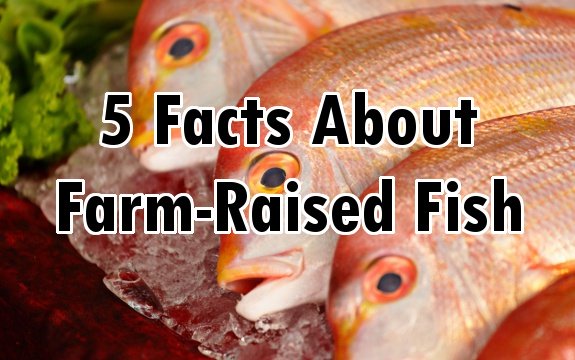5 Facts About Farm-Raised Fish You Should Know

 Farm-raised fish is less expensive and more widely available than wild-caught. But if cheap and easy to find are our only qualifications for making it into the shopping cart, we are likely loaded up with highly processed convenience foods. Just as you do when you opt for fresh produce over canned, you need to analyze seafood for nutritional qualities and risks, making the best choice for your health not just your wallet.
Farm-raised fish is less expensive and more widely available than wild-caught. But if cheap and easy to find are our only qualifications for making it into the shopping cart, we are likely loaded up with highly processed convenience foods. Just as you do when you opt for fresh produce over canned, you need to analyze seafood for nutritional qualities and risks, making the best choice for your health not just your wallet.
Like livestock raised in feedlots, farm-raised fish are done so with profits in mind. Knowing this gives you some hint into how they may be produced and cared for. Like livestock, costs must remain minimal in order for profits to flourish. This is the foundation of any industry and can ultimately put your health at risk.
Here are 5 things about farm-raised fish you probably want to know before you buy:
- 1. Farm-raised fish can be rife with disease – Because they are crowded into areas that are far more compact than in a natural environment, disease and illness can spread rampantly. Oftentimes, these diseases can even spread to wild populations. As MindBodyGreen reports, sea lice has destroyed 80% of the pink salmon in some populations, believed to have spread from overcrowded fish farms.
- 2. Farmed fish can decimate prey fish populations – Though some fish are fed corn and soy (certainly not something in their natural, wild diets), others are fed smaller prey fish. As a result, these fish are being consumed to the point of extinction.
- 3. Farmed fish simply aren’t as good for you – Because farmed fish are not eating their natural diet in most circumstances, they are not at peak health themselves. This means their Omega 3 concentration, for instance, is not the same as their wild counterparts. Further, they are regularly given antibiotics, which can lead to antibiotic-resistance in humans.
- 4. Fish farms cause serious environmental damage – Raising fish on farms causes serious ecological harm—by polluting natural waterways and more. The U.S. farmed fish industry is said to have $700 million in hidden costs, which is incidentally half the annual production value of the farms.
- 5. Mislabeled fish could mean you’re getting farmed varieties without knowing it – One study found 25 to 70% of seafood is mislabeled—labeled as different fish or as coming from different sources. Salmon labeled as being wild-caught was found to be farmed 56% of the time.
While fish from the ocean may be riddled with pollution and radiation, it’s important to know that farmed fish are served with a host of their own problems. It’s important to keep informed and make the best decisions you can with the information provided.

While I do not disagree with the information, if it does not say “In my opinion”, it *should* have some reference.